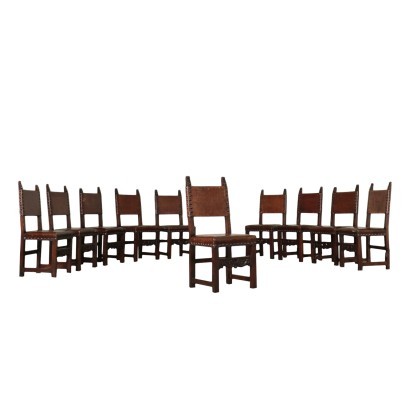Gruppo di Dieci Sedie in Stile Neorinascimentale
Features
Style: Neo-Renaissance Revival
Age: 20th Century / 1901 - 2000
Origin: Italy
Main essence: Chestnut , Walnut
Description
Sorrette da gambe connesse da traverse, delle quali quella anteriore intagliata con motivi fitomorfi. In noce e castagno, la seduta e lo schienale sono in cartone lavorato a emulare la pelle, fissato con borchie.
Product Condition:
Prodotto in discrete condizioni che mostra alcuni segni di usura.
Dimensions (cm):
Height: 104,5
Width: 49
Depth: 49
Seat height: 49
Additional Information
Style: Neo-Renaissance Revival
Stylistic revival, from the 1900s, of the forms typical of the Renaissance style.This is a style that re-proposes, looking at the grandeur of the past, decorative motifs and decorations typical of the 1500s.
Mascheroni, cornices, columns carved with herms that make up typical architectural structures of Renaissance palaces, are the elements that characterize the Neo-Renaissance style.
These elements will remain in the production of furniture until the early 1900s, contaminating themselves with floral elements.
Find out more about the Neo-Renaissance with our insights:
A Milanese library between the Belle Epoque and Fascism


























